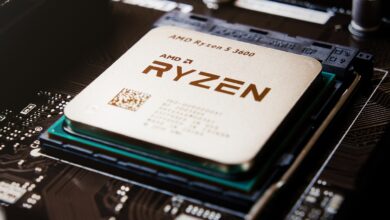25 NEW TECHNOLOGY TRENDS FOR 2025

The technological landscape of 2025 is defined by rapid advancements across industries, driven by breakthroughs in AI, quantum systems, and sustainable innovation. Below are 25 transformative trends reshaping global infrastructure, healthcare, and everyday life:
1. Generative AI
Generative AI tools like GPT-4 and DALL·E now produce human-quality text, images, and code. Applications span personalized marketing, drug discovery, and content creation, with 67% of businesses adopting AI-driven workflows. Ethical concerns around deepfakes and copyright persist, prompting regulatory frameworks.
2. Quantum Computing
Quantum systems are solving problems intractable for classical computers, such as optimizing supply chains and simulating molecular interactions. Companies like IBM and Google are piloting quantum-safe cryptography to counter security threats.
3. 5G and 6G Networks
5G’s ultra-low latency enables real-time IoT connectivity for smart cities and autonomous vehicles. Trials for 6G promise terabit speeds, supporting holographic communications and advanced AR.
4. Virtual Reality 2.0
Next-gen VR headsets deliver hyper-realistic simulations for training, therapy, and virtual tourism. Meta and Apple lead with lightweight devices offering 8K resolution and haptic feedback.
5. Augmented Reality in Retail
AR apps allow virtual try-ons and 3D product visualization, reducing return rates by 35%. Retailers like IKEA use AR to overlay furniture in customers’ homes.
6. Edge Computing
Processing data locally via edge nodes reduces cloud dependency. Autonomous vehicles and smart factories leverage this for real-time decision-making, cutting latency by 80%.
7. Blockchain Beyond Crypto
Supply chains, voting systems, and healthcare use blockchain for tamper-proof records. Walmart reduced food traceability time from days to seconds using IBM’s blockchain.
8. AI-Driven Cybersecurity
Machine learning predicts and neutralizes threats like zero-day exploits. Darktrace’s AI autonomously halted a ransomware attack in 2024, saving $2.6M in potential losses.
9. Climate Technology
Carbon capture systems and energy-efficient computing curb emissions. Microsoft’s underwater data centers use 40% less energy, while perovskite solar cells hit 31% efficiency.
10. Agentic AI
Autonomous AI agents execute tasks like customer service and code debugging. Gartner predicts 15% of routine decisions will be agent-driven by 2028.
11. Synthetic Biology
CRISPR-edited crops withstand droughts, and engineered microbes produce biofuels. Synthego’s gene therapies reduced trial costs by 50% in rare disease research.
12. Neuromorphic Computing
Chips mimicking neural networks process sensory data 1,000x faster than GPUs. Intel’s Loihi 2 powers real-time language translation for global telehealth platforms.
13. Advanced Robotics
Humanoid robots like Tesla’s Optimus handle warehouse logistics, while surgical bots perform precision operations with 0.1mm accuracy.
14. Digital Twins
Virtual replicas of factories and cities optimize energy use and disaster response. Singapore’s digital twin cut urban planning errors by 30%.
15. Spatial Computing
Apple’s Vision Pro blends AR/VR for immersive workspaces. Architects use spatial tools to walk clients through unbuilt designs.
16. Hybrid Work Technologies
AI-powered platforms like Zoom IQ summarize meetings and assign tasks. By 2025, 70% of meetings will include holographic participants.
17. Space Tourism
Blue Origin and SpaceX offer suborbital flights at $500K per seat. Lunar tourism plans emerge, with NASA awarding contracts for moonbase construction.
18. Wearable Health Tech
Smartwatches detect atrial fibrillation and blood sugar levels. WHO-approved wearables reduced heart attack fatalities by 18% in trials.
19. Green Hydrogen
Electrolyzers split water using renewable energy, powering heavy industries. EU projects cut steelmaking emissions by 95% via hydrogen.
20. Autonomous Vehicles
Waymo’s robotaxis operate in 12 U.S. cities, while Tesla’s FSD 12.5 achieves Level 4 autonomy. AI reduces accidents by 45% in pilot zones.
21. Personalized Medicine
Genome sequencing tailors cancer treatments, improving survival rates by 22%. AI platforms like DeepMind’s AlphaFold predict protein structures for drug design.
22. Synthetic Media
AI-generated influencers like Lil Miquela earn $10M annually. Studios use synthetic actors to cut production costs by 40%.
23. Quantum Cryptography
QKD networks secure government communications against quantum hacks. China’s 2,000km quantum line protects financial data.
24. Nanotechnology
Nanorobots deliver drugs to tumors with pinpoint accuracy. Graphene filters remove 99% of microplastics from water.
25. Hyperautomation
RPA bots handle 85% of insurance claims, while AI optimizes factory output. Nestlé automated 60% of its supply chain, saving $200M annually.
Challenges and Outlook
While these trends promise growth, ethical dilemmas—from AI bias to quantum hacking—require global cooperation. Investment in R&D is critical, with IT spending projected to hit $5.7T in 2025. Companies adopting these technologies could see 30% higher productivity, but workforce reskilling remains urgent. As boundaries between physical and digital worlds blur, 2025 marks a pivot toward an interconnected, AI-augmented future.



